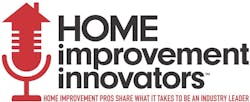7 Strategies To Ensure Success Before and After Private Equity Acquisition
Jacquelyn Martin considers herself a translator, fluent in both the language of home improvement companies and private equity firms. Her bilingual abilities are the result of a career spent talking finance, home improvement, and construction tech.
She founded her consulting firm Exponential Ventures in 2023 to help bridge the communication gap between clients that don’t always understand one another: private equity firms that own home improvement companies and want to make the most of their investment, and home improvement companies that want to position themselves as attractive acquisition targets. Here she speaks on seven best practices that can position companies for success before and after a sale:
1. Be customer-centric. The best organizations put the customer at the forefront of everything they do, and it speaks volumes in their culture.
2. Establish efficient workflows. This involves defining roles, assessing talent, and understanding workload. Companies need to establish clarity around where one person’s job begins, where that handoff takes place, and the responsibility of the next person. And, when employees are performing multiple roles that prevent them from being great at any one of them, you need to separate, specialize, and streamline.
3. Communicate effectively. Make your teams aware of what’s going on in the business, where the opportunities are, where they stand toward their goals, and how you’re going to help them achieve those goals and hold them accountable. And check in with team members. Companies can have a blindspot around the types of conversations they need to have. It could be as simple as having managers ask their team how they’re doing and what they’re struggling with. Doing so can uncover previously unknown challenges, weak spots, and inefficiencies.
4. Invest in employee training and development. Create a comprehensive onboarding program that helps employees assimilate and learn your culture. Prioritize ongoing training, coaching, and mentoring—especially at the management level, which is often overlooked. If managers and directors are set up for success, their teams, the company, and their customers all benefit.
5. Understand key performance indicators. Monitor your KPIs over the long-term and make them actionable. There are only so many KPIs that really matter, so focus and make them easy to find, consume, and act on. When used to their full potential, KPIs can help organizations understand what’s going on with their business, identify strengths, uncover weaknesses, assist in the allocation of resources, and help employees perform at their best.
6. Document your processes. Doing so can help identify and correct problems areas, increase efficiencies, and reduce risk by ensuring continuity if there are ownership or leadership changes or staff turnover.
7. Choose the right technology. Resist the temptation to get the shiny new object just because it’s shiny and new. Companies that successfully leverage technology base their purchasing decisions on their specific needs, goals, and communication style.


